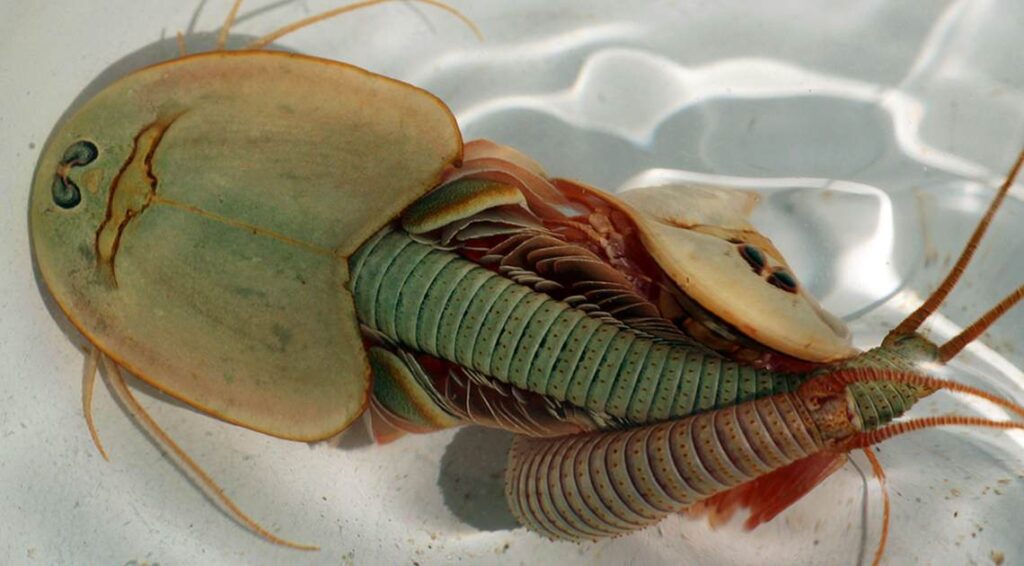
Three-eyed ‘dinosaur shrimp’ emerge by the hundreds from Arizona desert
Hundreds of Three-eyed “dinosaur shrimp” grew out of the North Arizona desert this summer after heavy rains creating a puddle of small water that pushed old eggs for decades to hatch.
National Park Service Officials in Arizona found hundreds of Longtail Tadpole Shrimp, or Triop Longicaudatus, swimming in the pond in the Pueblo Ball court at Wupatki Arizona National Monument.
Triops “looks like a small mini-horseshoe crab with three eyes,” Lauren Carter, Ranger’s main interpretation at the monument, told LiveScience. Eggs Triops can remain active in the desert for decades until rare rainfall creates a puddle of water for eggs to hatch. After hatching, the cushion grows and cooks quickly until now dries.
Triops looks so rare that tourists and even parking officials aren’t sure what they are when they are first seen in a 105-foot wide-wall structure during the summer.
“We know there is water on the ball field, but we don’t expect anything that lives in it,” Carter said. “Then a visitor comes and says,” Hey, you have a tadpole in your ballcourt. ‘”
Carter, who remembered a report of similar creatures in the petrified forest in Arizona from before in his career, looking for tadpole morphology and identifying them as a triop.
Triops, which means “three eyes” in Greek, also known as dinosaur shrimp because their morphology is almost entirely unchanged for almost 70 million years, with his ancestors developing between 419 and 359 million years ago. Even in their last emergence, Triop ancestors emerged more than 100 million years before the first dinosaur evolved over the Trias period 252 million years ago.
Triop is currently not true “life fossils”, Carter said.
“I don’t like the term ‘life fossil’ because it causes a misunderstanding with the public that they haven’t changed at all,” Carter said. “But they have changed, they have evolved. It’s just that their outside appearance is very similar to what they are millions of years ago.”
Analysis: Evolution can have long memory when you want
Although modern Triop must have adapted for years from the ancestors of the Jurassic era, the fact that they remain morphologically is extraordinary, considering the time scale involved.
Geological Timescales are difficult to understand since a relatively short short life man. Human civilization is only at the oldest age of around 12,000 years, which seems very long for the US modern. But these people are compared to the Ancestor of the 70 million year old Triops morphology, which is around 6,000 times older than the oldest temple of humanity.
In a shorter time than that, the age of dinosaurs came to the end of the disaster and some mammals that survived inherit the earth and evolved into everything from the Pope to humans and everything in between.
The triop is largely unchanged throughout this stretch is quite an achievement for intripid small shrimp.
